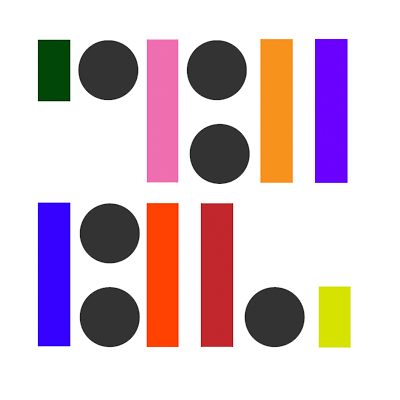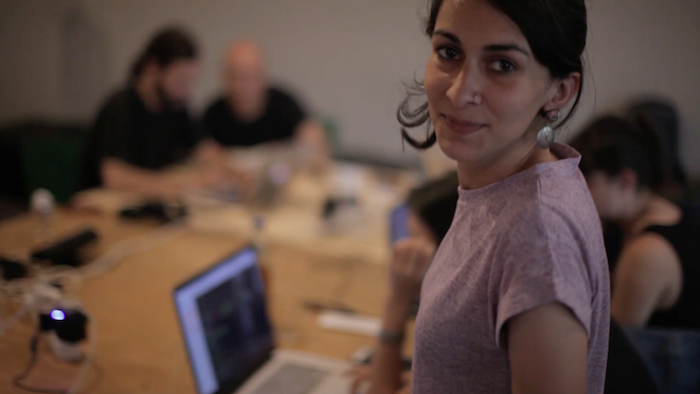interview with a coder
We first met Sukanya Aneja when she attended summer classes last year at School of Machines, Making & Make-Believe. A seasoned web developer, she attended the school to learn more about computer vision and machine learning. Now she’s returned to teach an introduction to coding, the way she wish she had been taught. And eat kebab.
Hi Sukanya, we’re excited to have you teach the upcoming class Codeine for Artists!
Hi Rachel! Thank you for inviting me, I’m looking forward to it!
Can you tell us a little about your background and how you came to get into coding?
I wanted to study Cognitive Science at university - a mix of Psychology, Philosophy, Linguistics and Computer Science - and so enrolled for an intro to computing class in my first semester, and was instantly drawn to it. I’ve always enjoyed logic/analytic puzzles, and I saw programming as an extension of this.
Since then, I’ve been working mainly with web technologies - building websites and web-applications. I liked working with the web since it allowed me to instantly see what I was building - I enjoy having visual feedback, and this is what lead me to creative coding. Over the past few years I’ve been playing around with generative art, electronics, coding for interactive installations, some machine learning, and trying bits of different creative code-related things that catch my eye.
During the computer vision program last year you created The Groping Machine to highlight the ongoing sexual harassment of women in India. How did that project come about?
The computer vision class last year comprised of 12 students from 10 different countries (or something close to this!) - so we had lots of conversations about where we came from, the similarities and differences. One of the things that came up was how common it is to be harassed in public places in India, and how India ranks as one of the unsafest countries for women. To me this was just common knowledge - something we all know about at home - but people here were surprised to hear this, which is what sparked the idea of the Groping Machine. I wanted people to know about it, to talk about it, and wanted the installation to create some amount of discomfort. I’d love to set this up at a metro station in Delhi someday.
Sukanya’s project The Groping Machine brings attention to the sexual harassment that happens in India.
You’ve said you plan to teach code the way you wish you were taught.
What in your opinion are some of the right ways and some of the wrong ways to teach code?
I wouldn’t say there’s right or wrong ways - it depends a lot on learning styles. When I was learning in school, we would be writing code that did fairly boring things, and the only way of interacting with the programs was by inputting text and seeing some text being spat back out. It was fun to the extent that solving puzzles are fun, but it didn’t leave me feeling inspired to do much more with it. We were re-writing algorithms and re-creating data structures so we understood the nuts and bolts, but I didn’t know how to apply this knowledge to contexts that seemed more exciting to me. I had the impression that code was a useful tool to make useful things, though with a lot of effort - and there was nothing very useful that I really wanted to make that hadn’t been made already.
This changed when I discovered Processing a few years back. With a few lines of code, I could see something on the screen and make it move, which then made me want to do more with it - creating a nice feedback loop. I stopped seeing code as a tool for just creating functional/useful things, it became a tool to be creative and have fun with instead. It pushed me to try new techniques, learn new algorithms, and solve problems I set for myself - giving me far more motivation to deepen my understanding.
And this is exactly how I would like to teach code, and the way I wish I had been taught - learning within a context that inspires and motivates one to learn more, and where the focus isn’t on correctness, but on exploration instead.
Why do you think some people fear coding and what can help them get passed it?
Well for one, it looks completely alien!
Aside from that, I think there’s a few reasons. Some people think they aren’t ‘technical’ enough, and that code is too complex or mathematical – when in reality, anybody can code, and the basic logic and building blocks of code are things that are already familiar to us. We already understand the notion of a set of instructions or rules, notions of if-this-then-that, notions of repetition – whether we’re applying this while cooking, or playing a game, or working with Photoshop or a spreadsheet, and countless other ways. Programming is about articulating these processes, and just requires a bit of patience.
I think there’s also a fear of not being able to see what one’s doing well enough, that there won’t be clear enough feedback, just scary black screens with green text – so there’s no feeling of control. We’re all used to the idea of making mistakes, but we generally can gather enough information to know how to rectify things. Code, on the other hand, can seem unfriendly and opaque in this regard - until you get to know it a little better, and learn to ask questions of your code to find your mistakes.
To get past the fear, I think we need to look at the ways we’re using problem-solving in our day to day life already, our ability to synthesize lots of information and moving parts, and break problems down to smaller chunks – programming is about using these skills we already have.
What benefits are there to learning to code?
I think there a lot of benefits – code as a creative medium can open up a lot of possibilities for artistic/creative expression; it can open doors for different kinds of work opportunities; and perhaps more importantly, a better understanding of the tools behind the increasingly digital world we live in can allow us to be more aware, active and critical participants in shaping the trajectory of technology.
In thinking about code, we also work the analytical side of our brains, learn to bounce between looking at details and looking at the big picture, and thinking in terms of systems with several interacting parts.
Who is this class aimed at?
Absolute beginners! It’s especially well suited for artists and designers, and anyone who is visually inclined - but also aimed at anyone who has been curious about code.
What can participants expect?
An intense two days of learning, writing and reading code, and creating digital artworks that we can share with the world! And hopefully, the desire to keep learning, coding and building more!
We’ll learn by doing - working through some examples to understand basic concepts, and then applying this knowledge to create our own artworks. We’ll also learn from each other by reading through and building up on each others code; and learn to be comfortable with not knowing things and seeking the information out - both of which are important skills for programming.
We’ll also look at some inspiring examples of art created with code, and go over useful resources and inspiration to continue our learning.
Sukanya’s Codeine for Artists: Numbing the Pain of Programming workshop takes place 28.- 29. October. To reserve your spot visit: https://www.eventbrite.com/e/codeine-for-artists-numbing-the-pain-of-programming-a-creative-coding-workshop-tickets-38116605794

